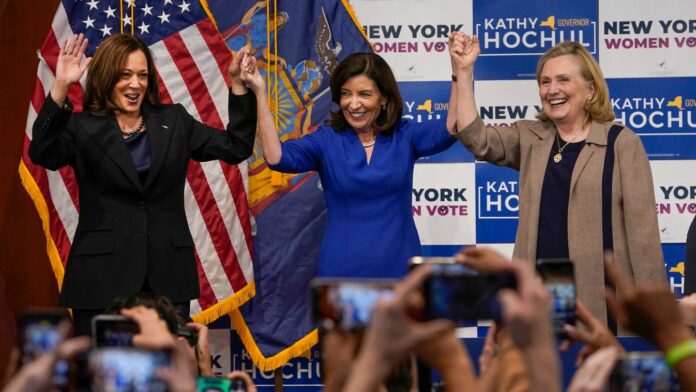Neither Hillary Clinton nor Kamala Harris possesses the historical significance or capabilities of former British Prime Minister Margaret Thatcher.
Joe Biden’s decision to step back from running for the U.S. presidency is not particularly surprising, considering his age and mental and physical decline. What is intriguing, however, is why the Democratic Party is focusing on a female candidate. Speculation has persisted for four years that Joe Biden was chosen partly because his Vice President, Kamala Harris, might take over during the term if Biden were “asked” to step down for health reasons.
It seems the moment has arrived. Although Biden has only announced that he will not run again, he suggested Kamala Harris as his replacement. This move by certain interest groups ensures that Kamala Harris will be the Democratic challenger against Donald Trump in the presidential race.
Whether this was a longstanding plan or a sudden decision is irrelevant. What is clear is that Kamala Harris was never meant for such political heights, as her tenure as Vice President has repeatedly and regrettably demonstrated. Her background also sends a message to American society, especially considering the United States’ founders were primarily of European heritage. Many things have changed over the centuries, but a new mystery requires solving: why do the Democratic Party’s behind-the-scenes decision-makers insist on a female candidate?
Recall the election cycles when Donald Trump won against Democrat Hillary Clinton. Hillary Clinton’s defeat saw her inciting her supporters with aggressive rhetoric to take to the streets of America’s major cities, vandalize property, and denigrate the lawfully elected President of the United States. This disgraceful behavior undermined the presidential office, which is designed to consolidate this continental nation and unify the diverse ethnic and cultural backgrounds of its immigrants.
For formal and actual stability, voters have traditionally elected white Christian American men as their President. This mindset was widely accepted until the election of Barack Obama and completely disappeared with Hillary Clinton’s nomination. This wouldn’t be an issue if it signified a manageable shift in political thought. However, neither Hillary Clinton nor Kamala Harris is of historical significance or possesses the capabilities of Margaret Thatcher, particularly her vision of national values. These women are clearly only symbols and deceptive icons in a society forced into chaos. Notably, Hillary Clinton’s potential candidacy instead of Kamala Harris has surfaced again in political circles, although it would be more challenging to manage now than eight years ago.
Given this context, the question remains: why does the power behind the scenes want a woman as America’s President? Notably, there was a suitable Democratic candidate, Robert F. Kennedy Jr., who could continue the party’s traditions. He questioned the continuation of the conflict in Ukraine and held a different stance, which likely disqualified him as a candidate, compounded by his male identity. Speaking of men, Kamala Harris’s internal staff member Eric Lipka spends weekends as a “drag queen.” Whether “artificial otherness” is tolerable or not, such roles are not truly suitable for the normal world of society, particularly in decision-making positions. Nonetheless, similar figures are increasingly found in the circles of Clinton and Harris.
The female candidate’s message, regardless of political arguments, requires decoding. The woman, the mother, the caretaker – symbols of life – do not belong on the battlefield. Historically, women organized political demonstrations primarily for peace and against violence. However, our current amazons, like Ursula von der Leyen or German Foreign Minister Annalena Baerbock, enthusiastically support continued bloodshed in Ukraine. The reason must be their duty to fulfill the business interests of the powers supporting their appointments. Hence, it’s no surprise that the world seems upside down.
Of course, there could be a simpler speculation behind favoring female candidates. Before venturing further, it must be stated that the author does not consider himself exclusionary, particularly regarding women’s capabilities. Many men, like the author, have undeniable evidence within their families that women are not only beautiful but also smart, creative, and often outperform men in debates. Therefore, it is possible that purely speculative mathematics drives the “female candidate” concept. Some studies suggest that a larger number of active voters are women, leading to the assumption that women will likely vote for their female counterpart.
Let us heed the advice of a European mind (Frigyes Karinthy): “Man and woman. How can they understand each other? They both want different things – the man wants a woman – the woman wants a man.”
The author is an intelligence expert and chairman of the board of the Protected Society Foundation.
Edited by Laszló Földi

